My Macross Story, 1983-1993
This is a tale of what happens when you get more than you bargained for. And the hazards that can follow.
Let’s start off in 1983. Around the time I put high school behind me (thank gob) and entered the job market, I began learning things about cartoons and comics from Japan. I’d been primed for this by Speed Racer about ten years earlier, and Star Blazers in 1980. Now that I had some income and relative freedom, my horizons were broadening. A close friend of mine named Steve Harrison had already taken the plunge and was happy to introduce me to all the amazing things he was discovering via underground tape trading and monthly magazines from Japan.
One of these new things was an “anime” series (what a great word) titled Super Dimension Fortress Macross. It had debuted on Japanese TV in October ’82 and wrapped up with 36 episodes in June ’83. By this time, it had already ended and been replaced by something else (called Superdimension Century Orguss, but I won’t digress). Japanese viewers with VCRs had recorded episodes, and the time lag inherent in VHS trading meant we were just starting to see them in the latter half of ’83.
Everything about it was riveting. Giant space battles! Amazing transforming mecha! Cute girls! Pop songs! A love triangle! This thing had it all! Steve had already served as my tour guide into the world of Space Battleship Yamato (from which Star Blazers had emerged) and this felt very much like the next step down that road. (No surprise, many of the top staff members worked on both.) As someone intent on making a career in visual media, starting with comics, my creative curiosity was ignited on multiple levels.
TV episodes were hard to find back then, but for some strange reason Macross model kits suddenly started turning up in the more progressive hobby stores on our regular patrol routes. It’s impossible to describe how exciting it was to see that stuff for the first time, so all I’ll say is that I bought up and built as many as I could afford. They were basically unsold overstock from Japan, but we didn’t know that at the time. We just assumed Macross was so outrageously popular that it could no longer be contained in its home country.
We were sort of right about that. After all, it’s one of the few anime shows that actually got extended because its ratings were so phenomenal. There were plenty of examples that went the other way; Yamato and Gundam, the two biggest franchises in anime history, both struggled with low ratings on their first outings and were cut short as a result. Macross came up in their shadow with the benefit of hindsight and got a 12-episode extension instead (going from 24 to 36). Not bad at all.
In 1984, all the anime magazines were abuzz about a Macross feature film called Do You Remember Love that would debut in the summer. It seemed like confirmation this was something special. And we were there to see it happen in real time, along with all the other cool shows that began to filter in. It was a great time to be a fan. And a really great time to be a new fan.
Behind the scenes, a deal was struck with a US company named Harmony Gold to import the series. The first three episodes were dubbed as a sample for TV broadcasters, then released on a single VHS tape titled Macross: Booby Trap in the fall. Steve got a copy, and we all devoured it. Some of the acting was wonky and the English opening song was godawful, but the rest was good enough to make us want more. Since we had no idea when more was coming, we just resorted to untranslated Japanese episodes. This was enough for me to go all in; I bought my first VCR at the end of that year, and got started on my personal collection immediately.
When January 1985 rolled around, we hadn’t seen any indication of a second Macross tape, though a comic book tie-in from Comico did pop up that month. What we didn’t know was that, rather than Macross continuing on its own, it was instead being folded into an 85-episode package with two other shows. It made its debut on syndicated TV in March under the new title Robotech. Comico’s second issue of Macross was retitled Robotech: The Macross Saga, and we were off to the races.
Our region in western Michigan didn’t get Robotech in syndication in that first year, so we had to rely on tape-trading partners to copy it for us. Once we got a look at it…we were not impressed. The same voice cast returned from Booby Trap, which gave it some familiarity, but now the story had gone wonky due to writing changes that would Frankenstein it into the other two shows. The plot was intact, but details were different. There was a narrator who wouldn’t…shut…up…and worst of all, the original music had all been stripped out. In its place was what sounded like bargain basement TV commercial jingles. The rewritten pop songs were the worst part, like sandpaper on the soul. Harmony Gold had taken our banquet and turned it into junk food.
The Comico comics were equally offensive. Embarrassing art from top to bottom, barely held together. I’d collected several Japanese books on the anime series by this time, and the comics just looked like a cheap parody of the source material. Objectively speaking, I couldn’t do much better at that age (I was 20 then), but I knew what “better” should look like, and I aspired to it. If Comico had called me out of the blue and asked me to take over, I would have said YES before they got the whole sentence out.
1985 was the year we finally got to see Do You Remember Love, and it was a stunner. It was obviously a labor of love for the animators, hyper-detailed and packed full with all the craftsmanship a TV budget couldn’t afford. Seeing it raised the bar on everything. Next to that, Robotech seemed feeble and cloying. A vain attempt to hijack someone else’s creativity (one look at the on-screen credits made this obvious). It allowed me to see the whole Macross series from start to finish, but I despised the delivery mechanism.
Out in the rest of the world, Robotech was scooping up fans by the thousands wherever it was broadcast. Harmony Gold was high on its own supply, and fandom seemed to believe the hype while Steve and I were off to the side shaking our heads in disbelief. I ground my teeth extra hard whenever I read about how “great” the acting was and how “symphonic” the music was. It felt like Secret Wars all over again; a 12-issue 1984 series from Marvel that was touted as the greatest thing they’d ever published, when it was in fact the dumbest.
That comic was dumb enough to make me quit Marvel, and all of this Robotech nonsense was dumb enough to make me quit Macross. I’d bought all the Macross books and built all the Macross model kits I wanted. That itch had been thoroughly scratched. There was a lot of other anime out there, and it was easy to let Macross fade into the background. If Comico had called me up at this point, my answer would have been “goodbye.”
Over the next few years, fandom turned around. Robotech did a LOT to get people interested in anime and manga (its one unassailable accomplishment), but it created an inevitable backlash. Once everyone’s horizons were sufficiently broadened, they joined me in recognizing the deficits of Robotech itself. Unfortunately, that turn was harsher than it should have been, with Harmony Gold personnel getting harassment and actual death threats. Ironically, that brought me back to their side a little bit. I thought the proper mature adult response was to grieve quietly and move on, but devotion is often one coin toss away from obsession, and fandom is obsession personified. Flirt with it at your peril.
Jump forward to 1990. I’d finally landed a professional comics career and the publisher that wrote my paychecks (Eternity, an imprint of Malibu Comics) happened to have the Robotech license. Due to evolving conditions, I consented to co-create a series for them that did pretty well. I wrote all about it here, so I won’t repeat the details.
Ultimately, my association with Malibu intensified to the point where they invited me to move across the country (on their dime) and become a staff member. When they asked me this in the fall of 1992, it was the best prospect on my plate, so I agreed to it. That decision lined me up for a LOT of dates with destiny…including one with Super Dimension Fortress Macross.
I took my first step into the office in December, met people who had previously been voices on the phone, and got to work as the head of a newly-formed art department. I’ll sum up the precondition for this as simply as possible: earlier in the year, Image Comics was formed by artists who broke away from Marvel to do original, creator-owned superhero titles. They needed someone to handle their infrastructure (prepress, printing and shipping) for that first year, so they hired Malibu. This brought in a big cash infusion, which Malibu decided to invest in expanding their line. They were going to launch their own superhero universe in 1993 and needed a lot of new people on board to handle the workload. I was a people, and they knew they could count on me, so my butt landed in the chair.
The new superhero line was to be called The Ultraverse, and my job would be to manage a gang of artists to take care of lettering, logos, and various other in-house projects. The real labor (and the other artists on my team) would arrive in the spring, so for the time being I took on work that I previously would have done as a freelancer. For example, lettering the latest Robotech comic, titled Return to Macross. (You ask, how much more symbolic could a title be? And the answer is…none. None more symbolic.)
I’d just finished drawing the last issue of Invid War and thought I was done with Robotech at last, but Robotech wasn’t done with me. Here it was on my desk again in 1993. And now it was a Macross comic.
Did I hurl it to the floor and stomp on it? No, I was too much of a professional for that. I didn’t actually dislike Macross, despite everything I described above. In the years that had passed since 1985, things settled into their proper perspective. Robotech hadn’t ruined Macross for anyone. I didn’t like much of what I saw in the Robotech world, but Macross was back to being A-OK. What’s more, this particular Macross comic was pretty good. Bill Spangler (my Invid War co-creator) was writing it, and newcomer Mujib Rahiman had an interesting art style. Much more manga-like with a real flair for page layout.
I lettered the first issue and had some time to spare, so I decided to give the book an additional boost by adding screen tones to the art wherever needed. It helped to balance Mujib’s high-contrast look and strengthen the manga flavor. This was the benefit of me being in-house and having some creative authority. As a freelancer, I had to pay for my own sheets of screen tone and they weren’t cheap. I never dreamed that someone on the inside would supply them, much less have the skill to apply them. But here I was, making it happen for Mujib. It made me enjoy being there and – more importantly – made me enjoy working on this comic.
With issue 2, things went askew. Mujib was only able to deliver half the pages. I don’t remember why. A trip to the googler tells me he did other comics afterward, so maybe he was getting higher-paying work from somewhere else. Either way, since I was sitting right there, the editor asked me to draw the rest of the issue. Ten years after discovering Macross, I stumbled my way into drawing a Macross comic after all.
I didn’t want my pages to look jarringly different from Mujib’s, so I imitated his style as best I could (penciling AND inking) until the scene shifted to another planet, and then I “relaxed” into my own. I stayed “relaxed” for two more issues after that, and it became a freelance gig. Yep, I worked on comics all day in the office and then went home to work on different comics at night. A dream come trooooo!
For issues 3 and 4, I got one of my old Michigan pals named Jack Snider on board for the inking. He did such a fantastic job, it made me hate myself for not teaming up with him years earlier. An ideal inker was in my midst, and it had never even occurred to me to ask him.
The editor lined up another artist to take over with issue 5, so my involvement ended before it got to be a burden, and I liked everything about it. And that was the end of my Macross story.
But it certainly wasn’t the end of Macross itself. After a couple mixed attempts to revive the series in Japan (Flashback 2012 in 1987 and Macross II in 1992), it finally caught fire again with the massive double header of Macross Plus and Macross 7 in 1994, followed by a prequel titled Macross Zero in 2002, a sequel titled Macross Frontier in 2008, and a further sequel titled Macross Delta in 2016. There were multiple events and spinoffs along the way and the constant promise of more to come. With an ever-widening world to bask in, I reaffirmed my fan status and rejoined the party. It felt good to come home again.
Meanwhile, things weren’t so rosy at Malibu Comics. After a promising start, the big superhero line smashed facefirst into multiple obstacles and teetered on the brink. I saw the writing on the wall and high-tailed it out of there in 1994. Shortly afterward, Marvel bought the company and shut down the Eternity imprint. After this point, the Robotech license was rescued by Academy Comics and the ongoing titles continued there. Return to Macross picked up with issue 13. Academy in turn folded when Harmony Gold shifted Robotech over to Antarctic Press from 1996 to 1998. Read more about the turbulent history of Robotech comics here.
I’ll have more to say about the Malibu experience in my next Pro Comics article. For now, here are all four issues I contributed to, some words from Writer Bill Spangler, and a bonus dive into Macross world. Enjoy.
The history of Galactic Trading Company
(Macross model kit importer)
Read all 37 issues of Return to Macross here
Return to Return to Macross
by Bill Spangler
Tim and I may have decided not to do any more comics connected with the Invid invasion, but thanks to this one, we ended up working together again.
The original title for the book was Robotech: New Millennium (the 21st century was still several years away) and was at first devoted solely to events on Macross Island. The editor wanted the name changed to Return to Macross and to split the book with Zentraedi adventures, as they searched for Zor and the SDF-1. Once I heard that Tim would be taking over the art, I knew the book would be in good hands.
I started RtM with a couple of specific goals in mind. I wanted to make the book appeal to science fiction fans in general as well as hardcore Robotech fans. First contact with alien life is, after all, a classic SF trope. I wanted to make sure that Roy Fokker didn’t sound too much like Max Sterling, the protagonist of The Malcontent Uprisings, another Robotech series I wrote. Whether I succeeded in either of these two goals is not for me to say. I can say, though, my favorite Fokker line is probably the first line I gave him. As his plane approaches Macross Island, he looks down at the SDF-1 and mutters, “Hello, baby. Did you miss me?”
Of course, there were other challenges involved with writing the book. For one thing, I needed to figure out which mecha I could use. I decided I could talk about prototype Veritechs, but they had to be used sparingly. Primarily, I had to rely on the Destroids. For another thing, I needed to show conflict and drama without large scale combat, because there wouldn’t be much. Fortunately, Tim is an expert at dramatic staging. Check out the end of Dr. Wilber’s speech in issue 2 and the cover of issue 4.
Return to Macross proved to be the comic I had the longest relationship with. There was a total of 37 issues, 12 from Eternity and the rest from Academy Comics. The late Robert Gibson wrote five of the Academy issues, but I scripted the rest. When we switched to Academy, the title focused entirely on life on Macross Island (a relief for me, because I was finding it harder and harder to find interesting opponents for the Zentraedi.) I even wrote a 10-page sample for a possible Return To Macross novel, although obviously nothing ever came of it. Macross Island was probably a dangerous place to live, but it was a great place to visit.
Macross books & magazines
Macross music & video

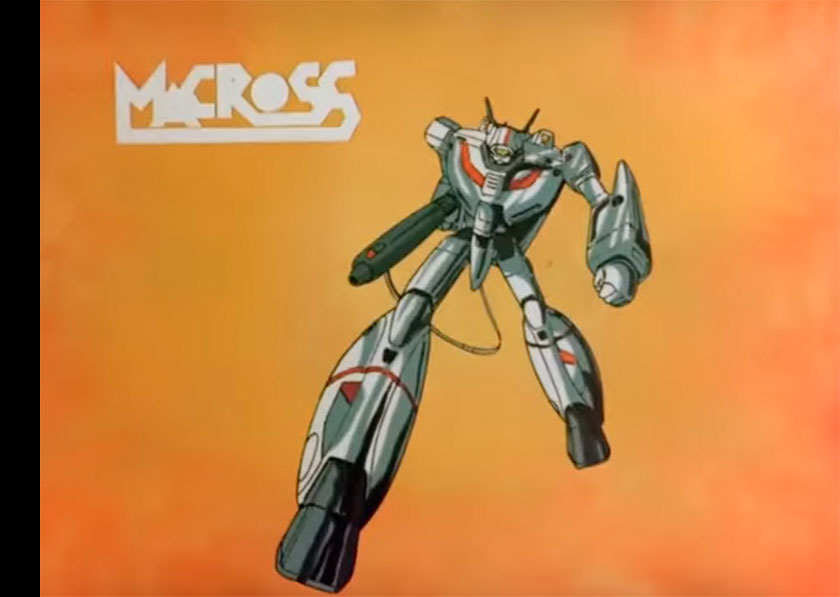
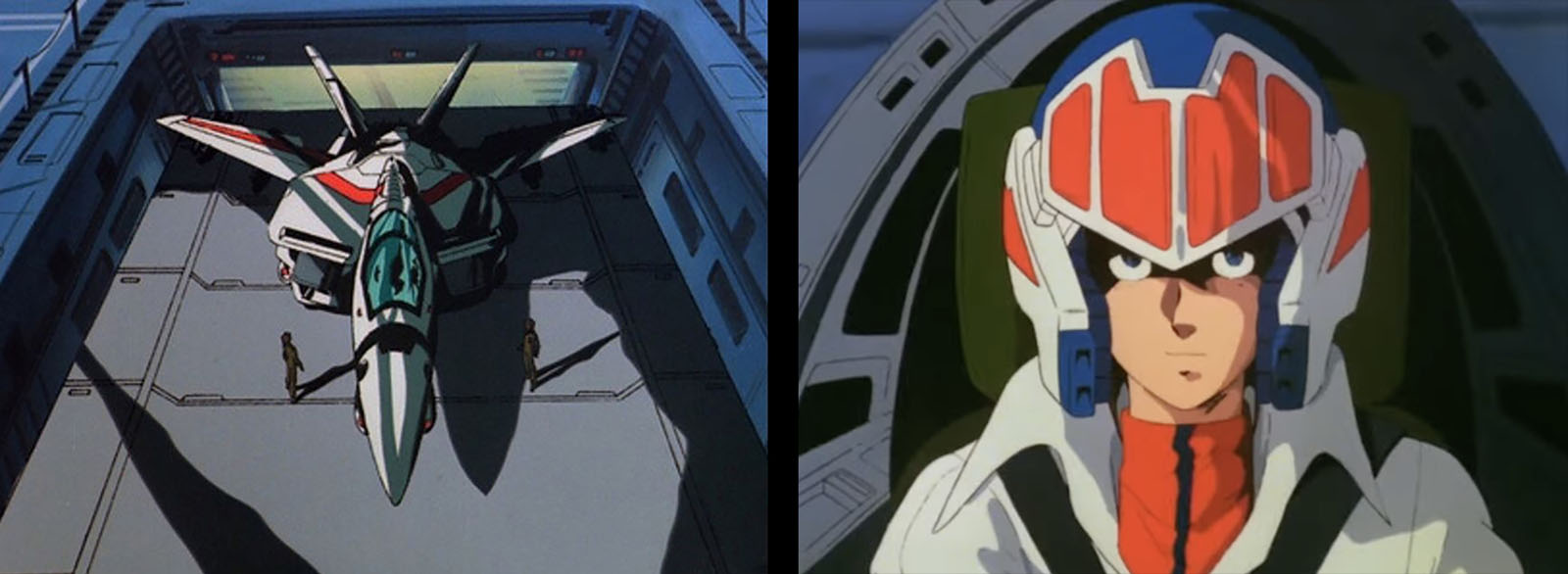
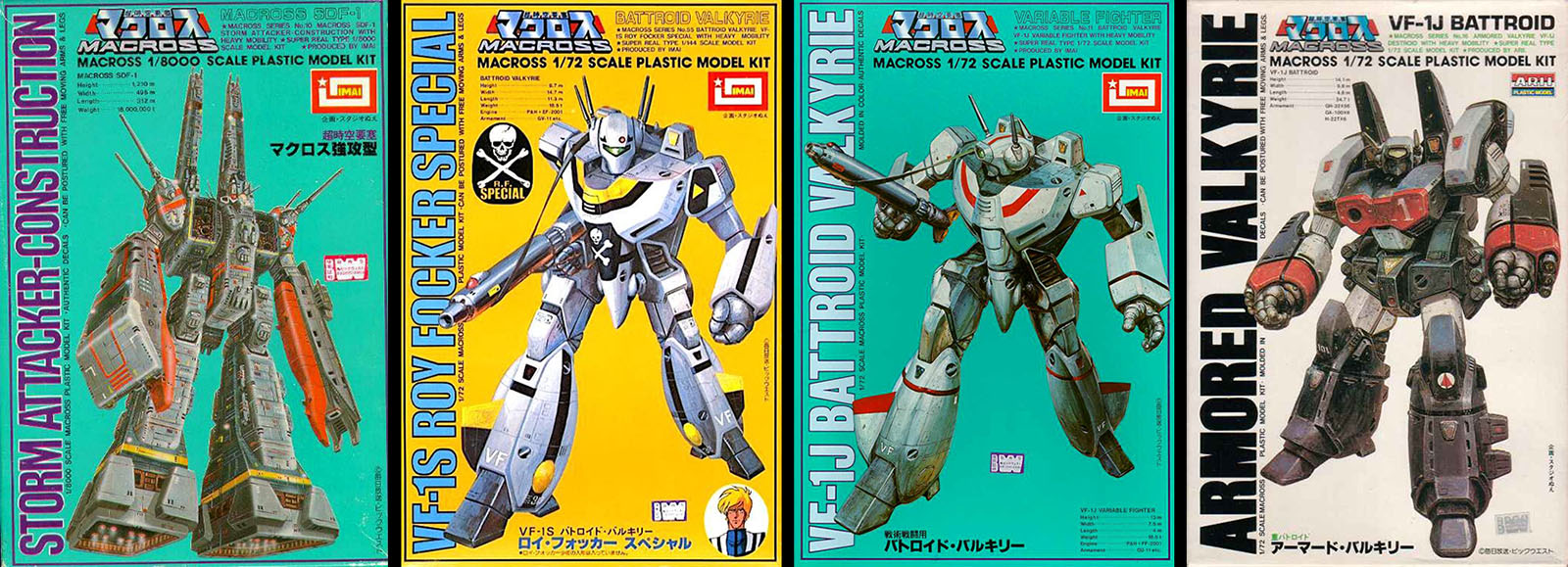
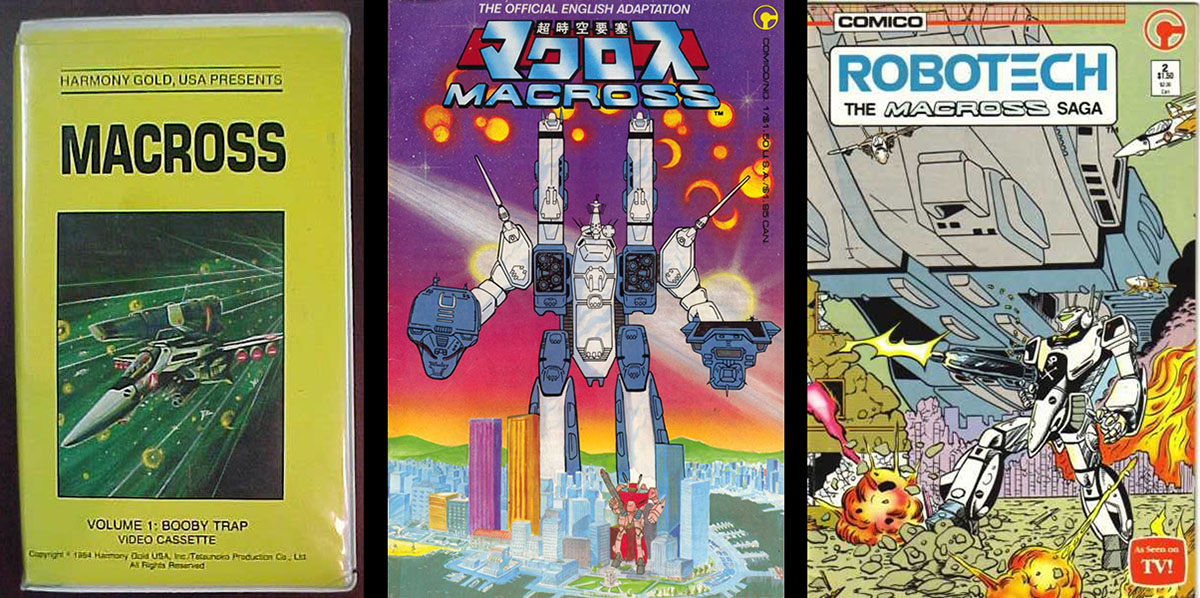
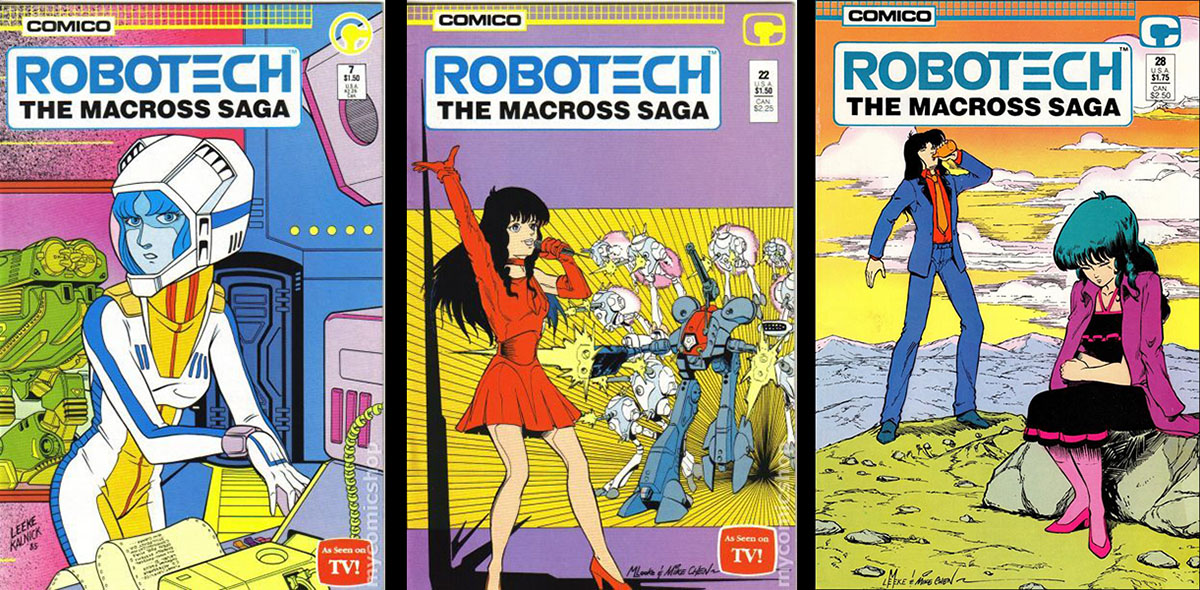
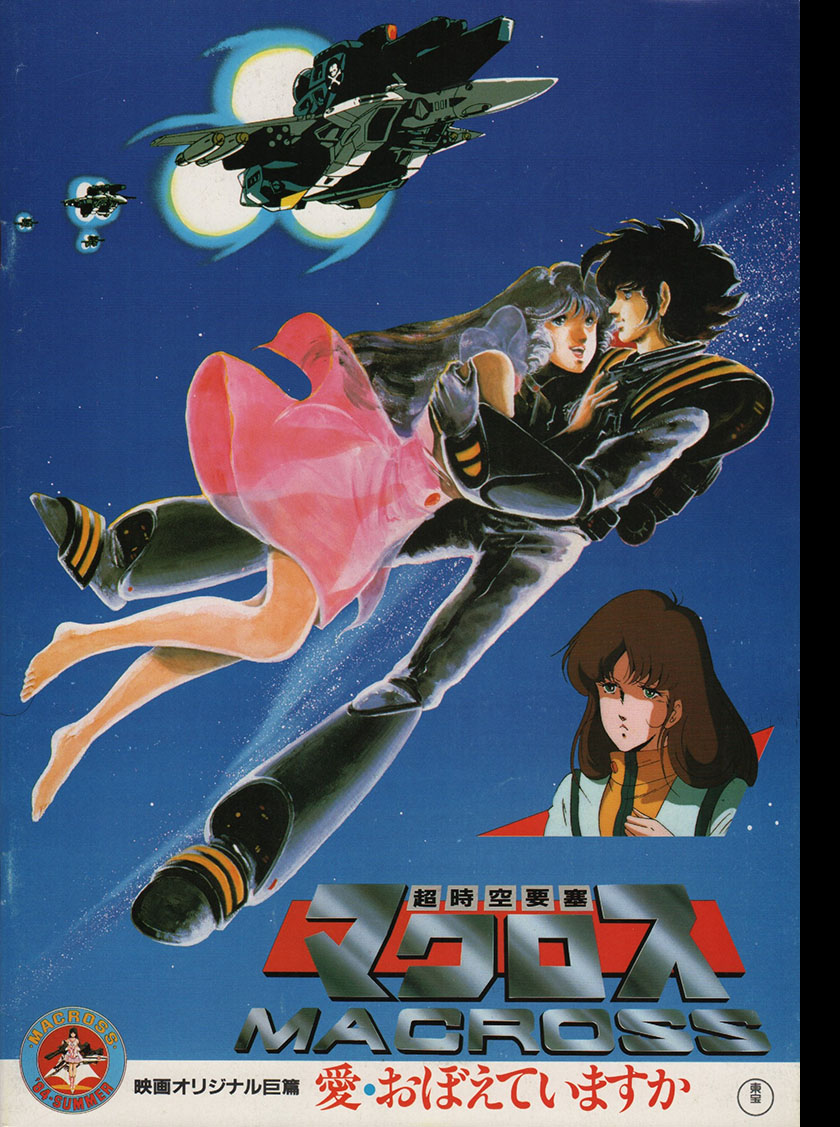
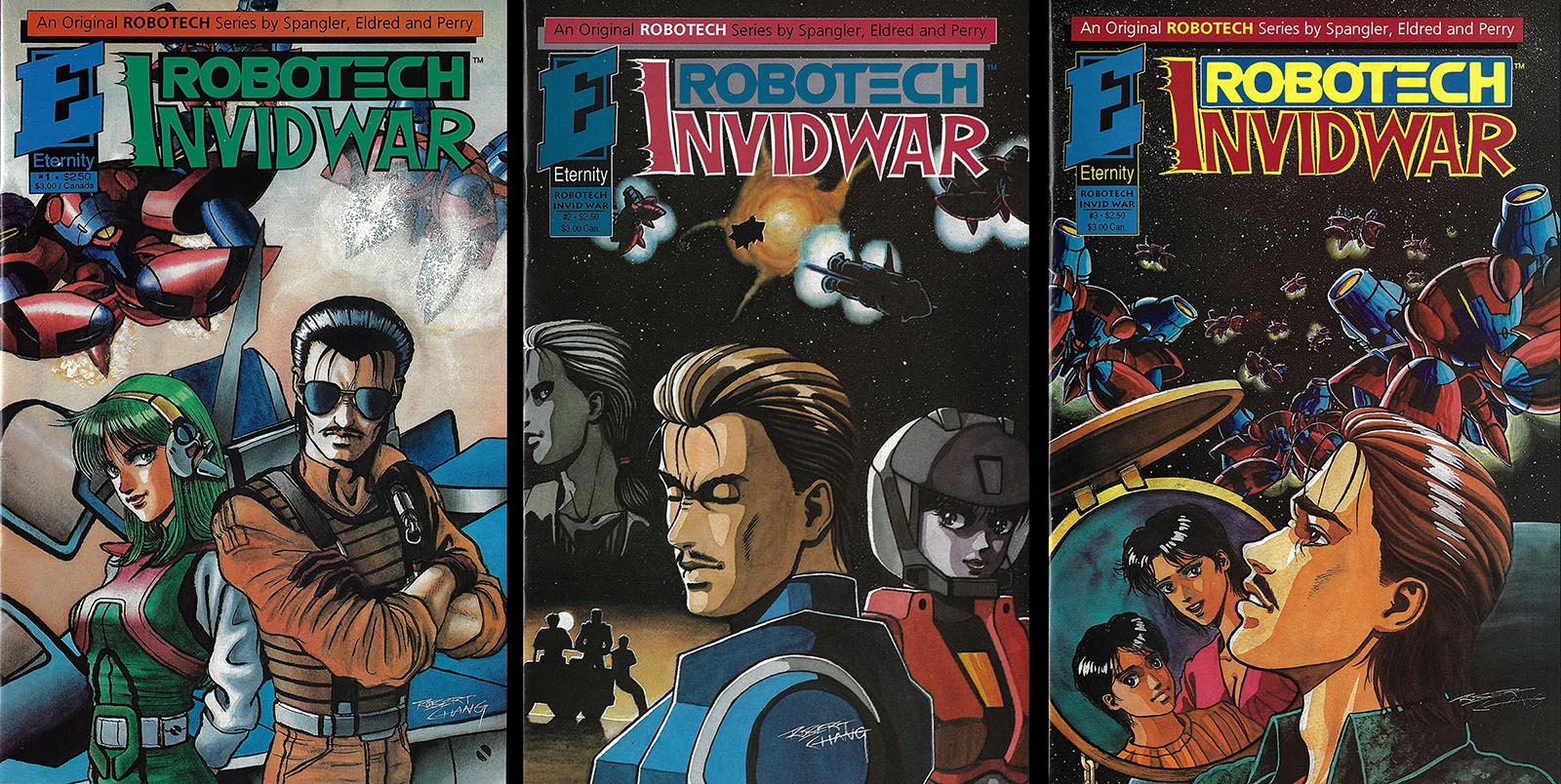
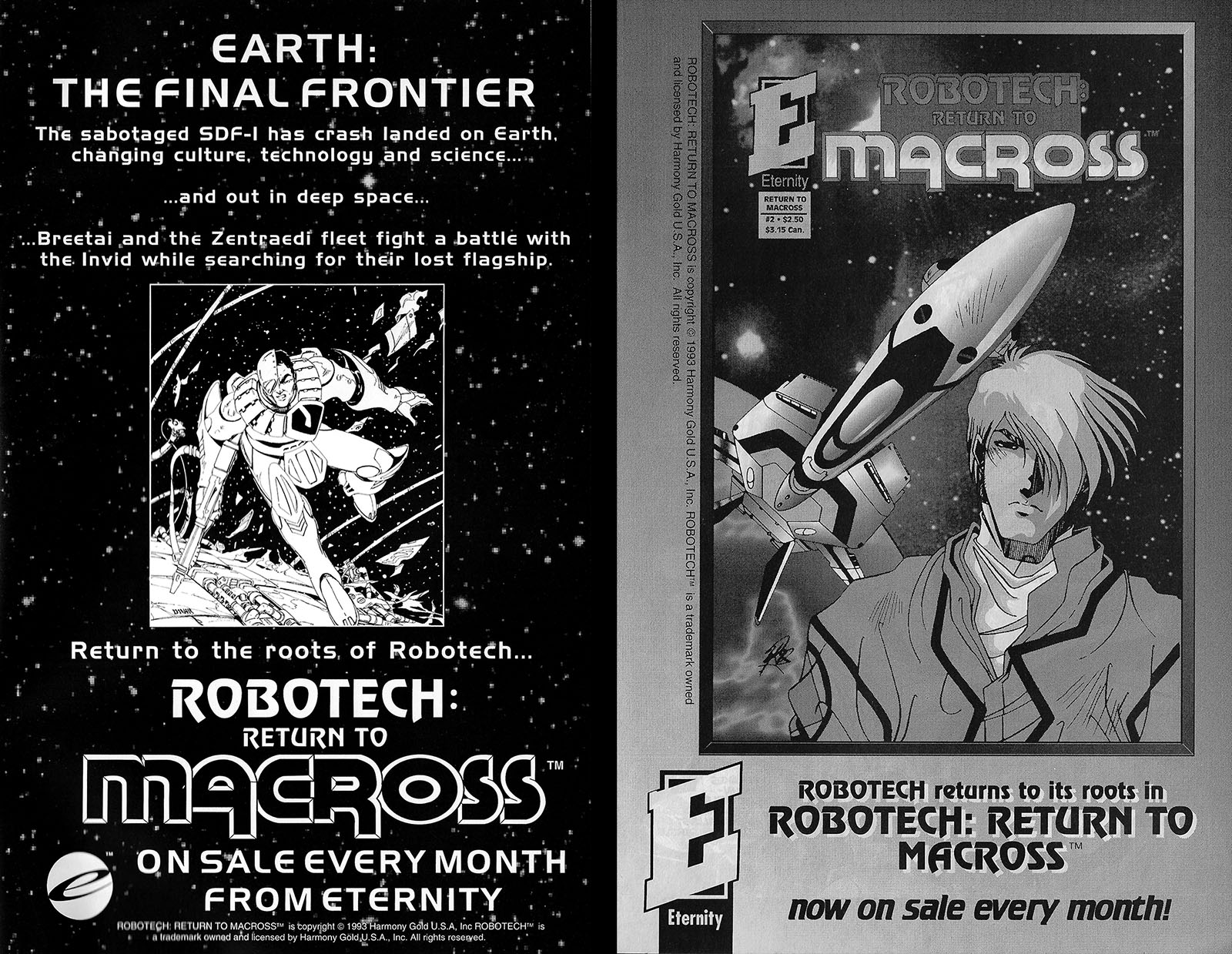
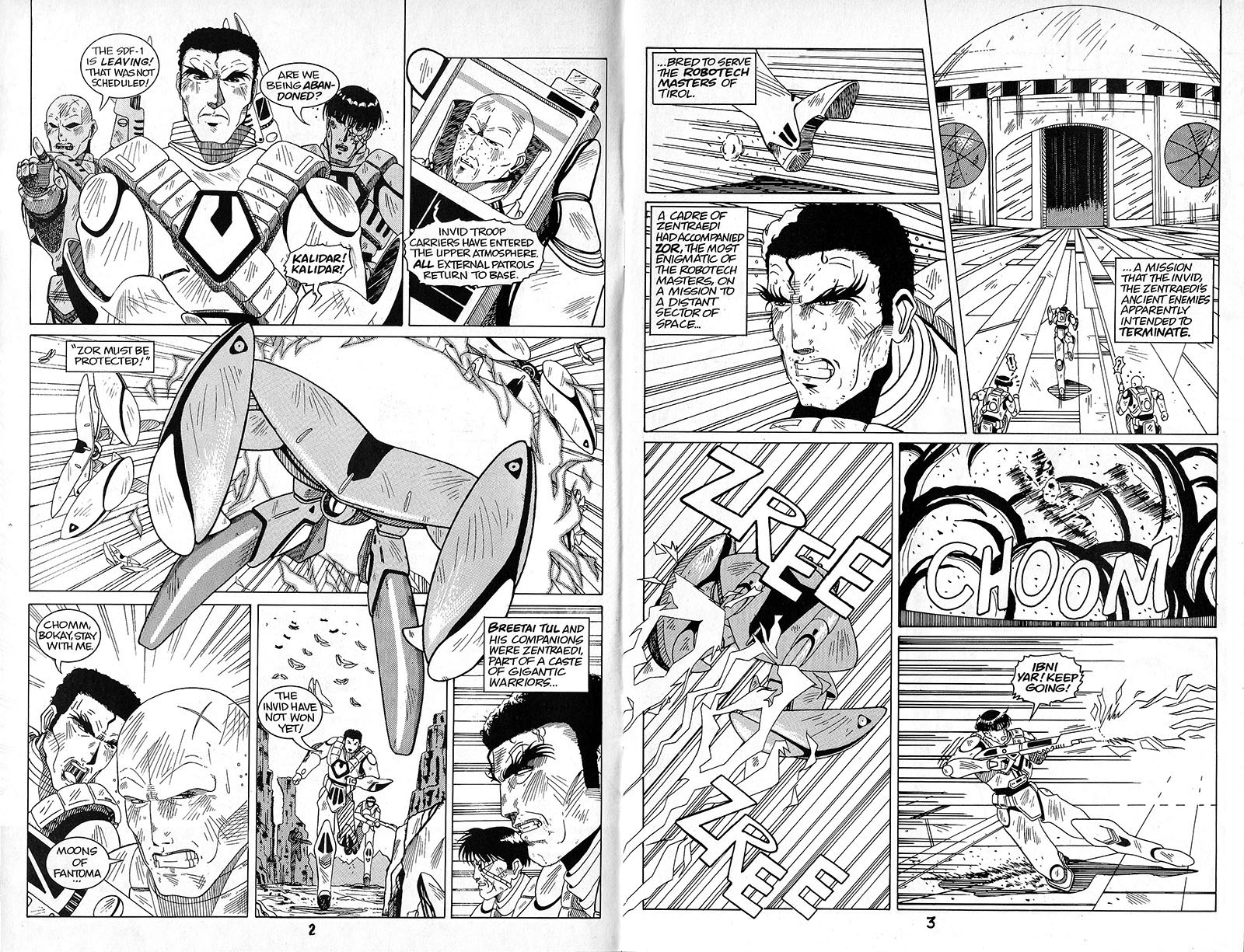
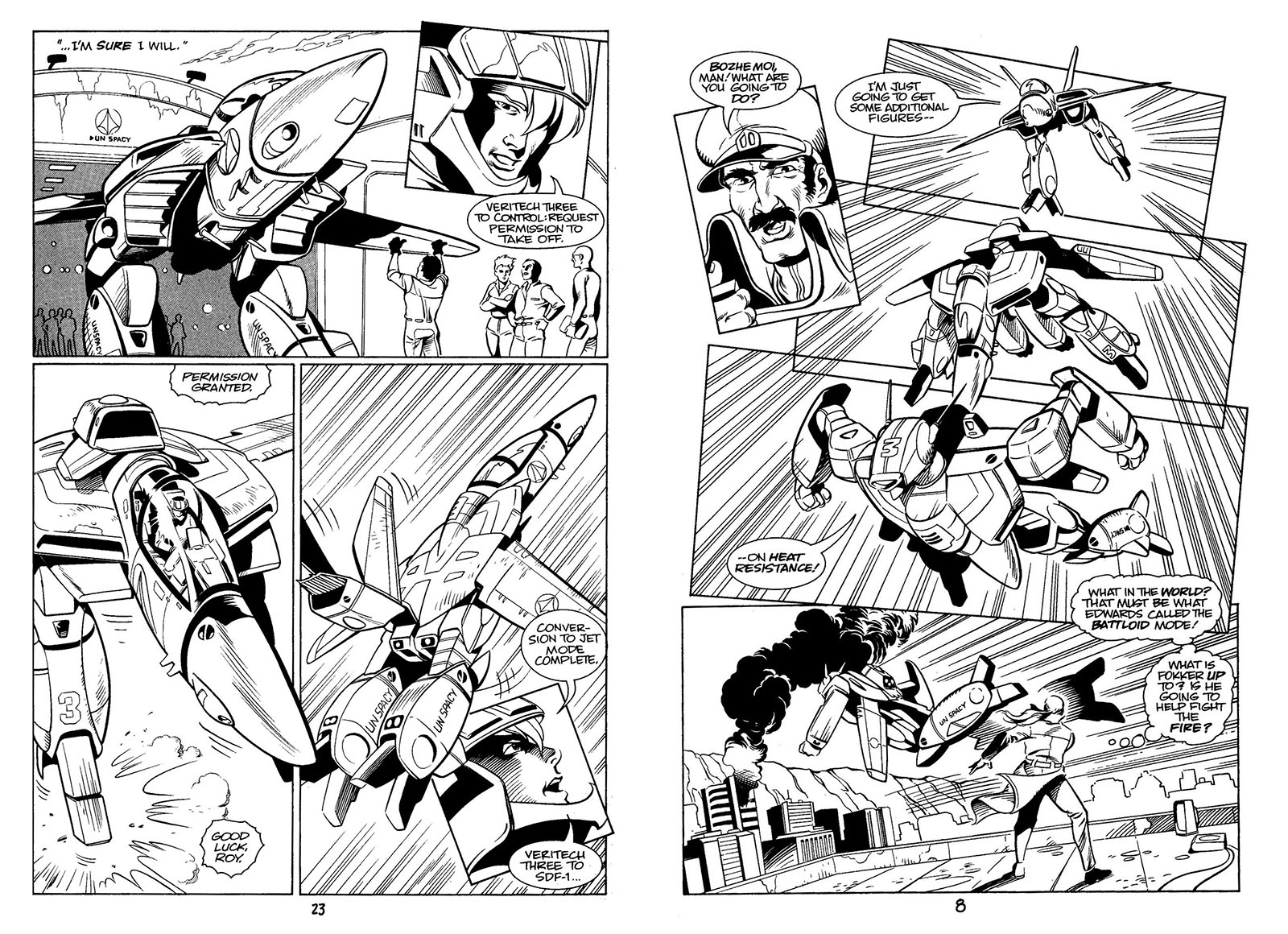
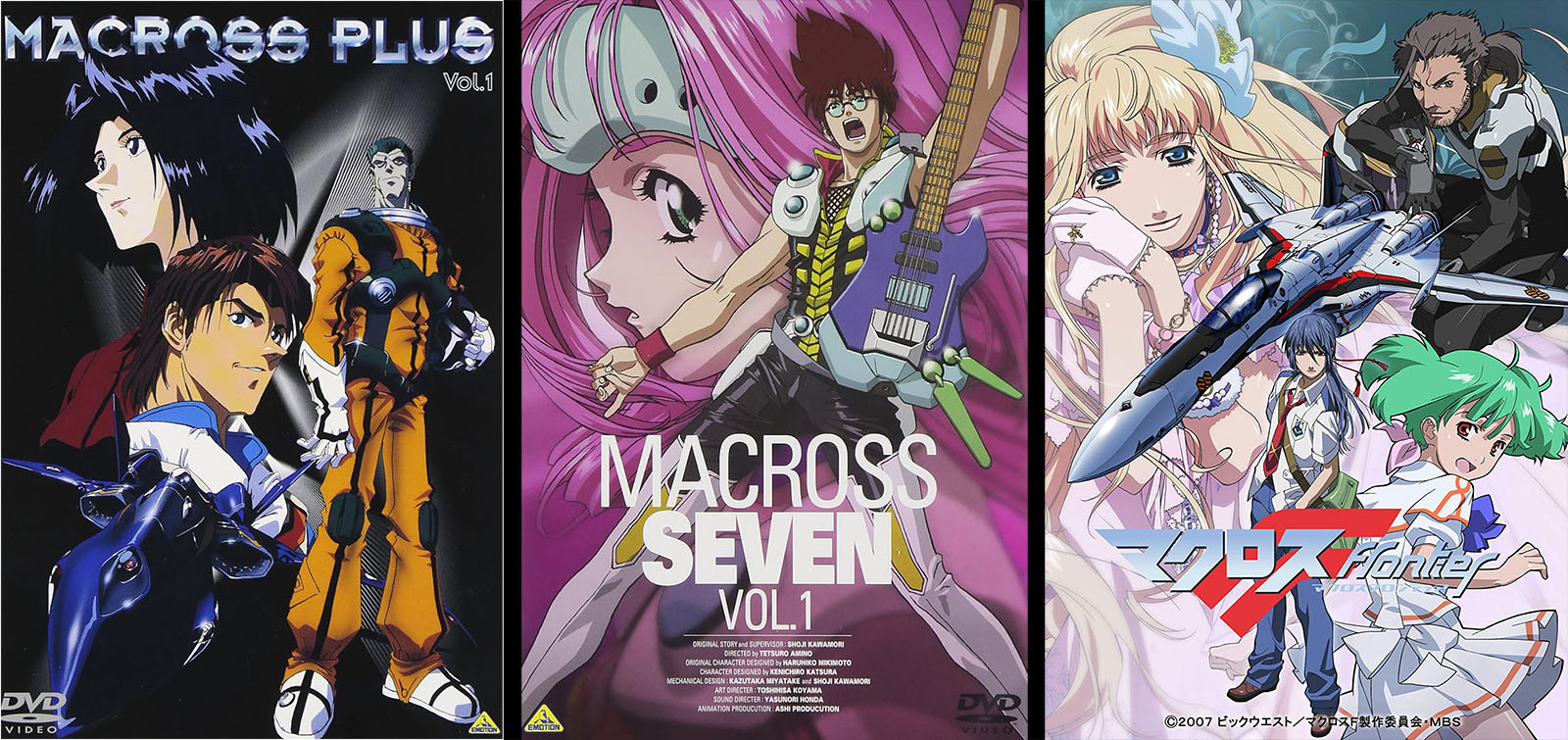
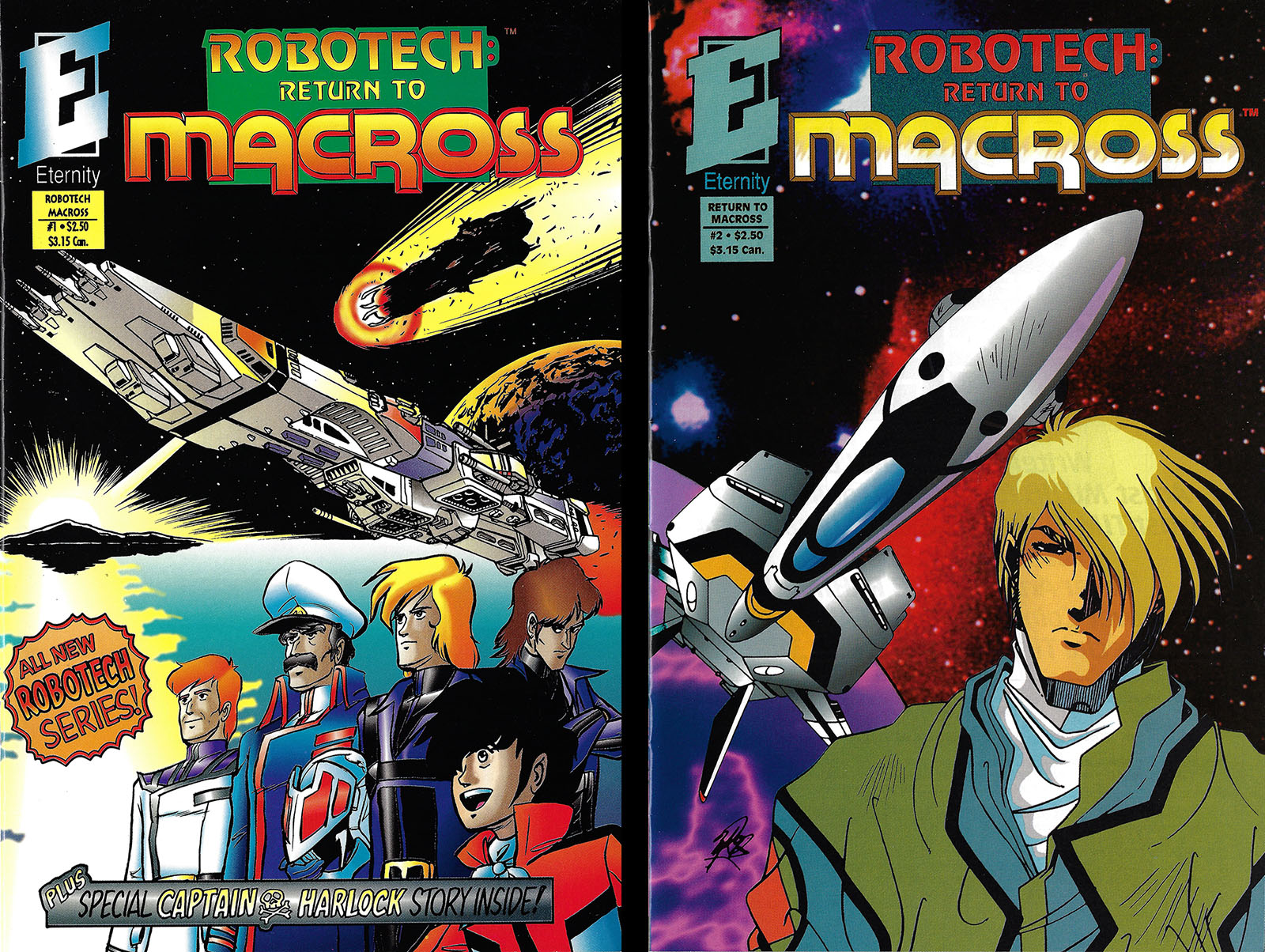
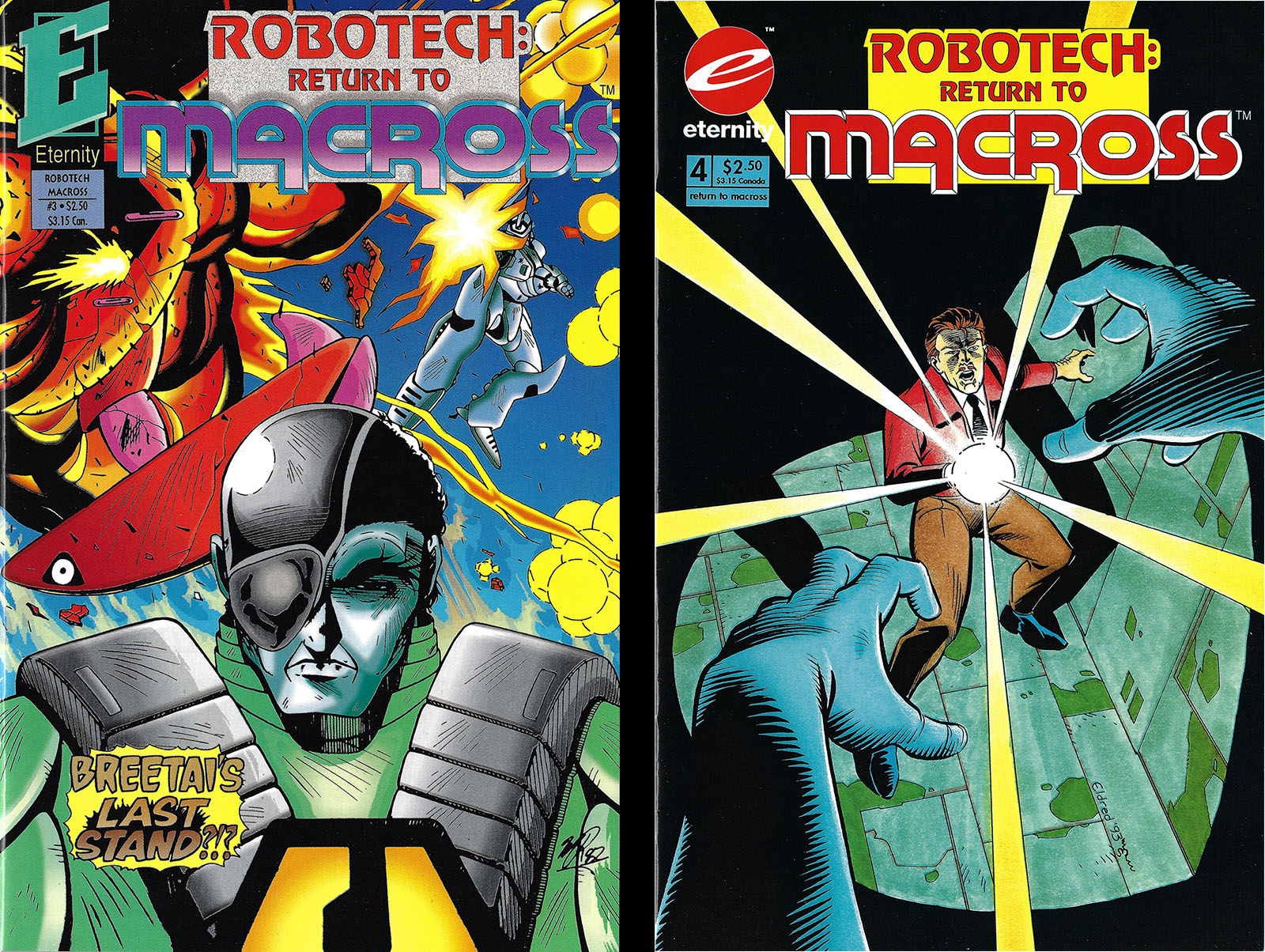
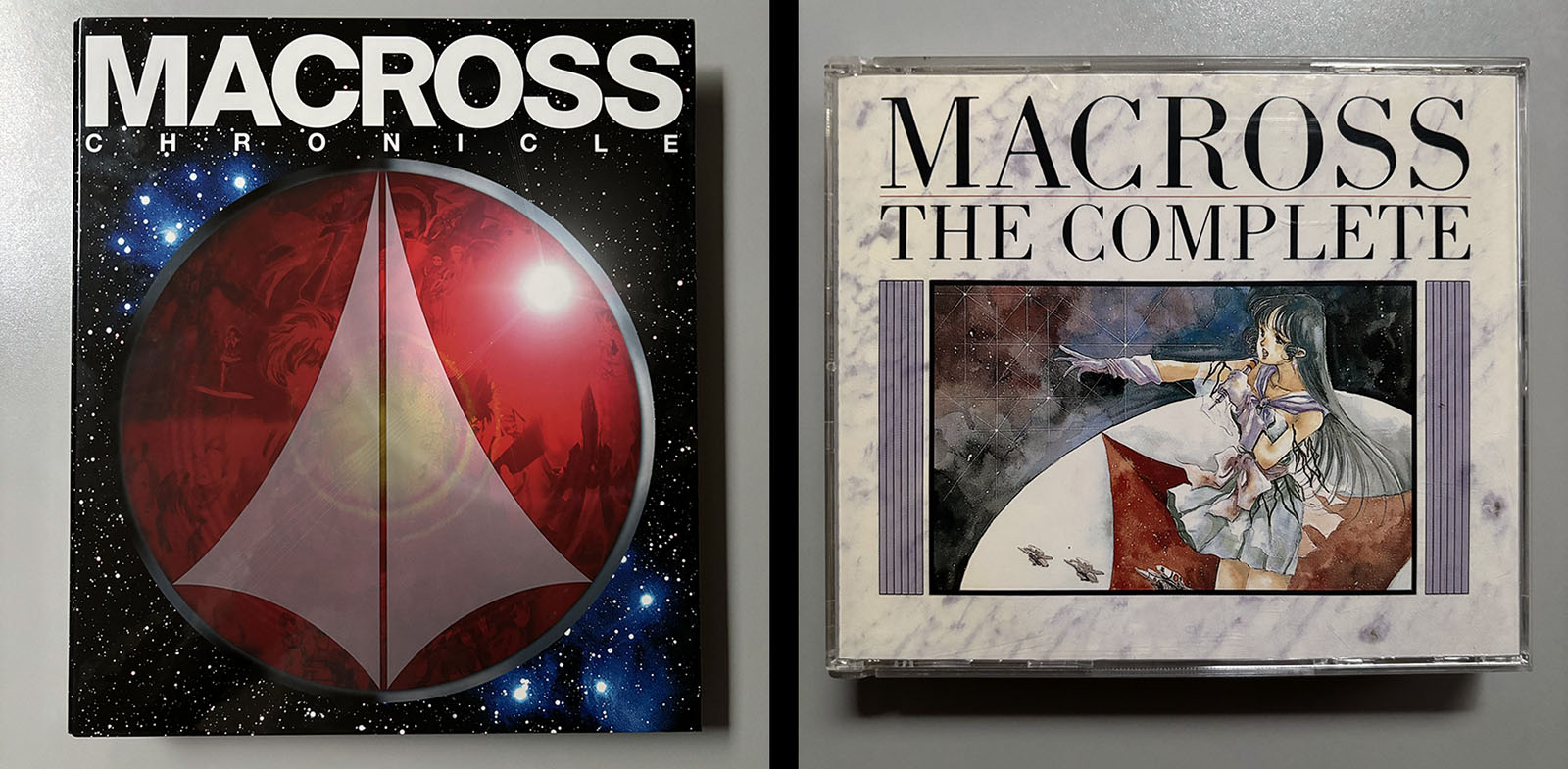
Hello! What an amazing story – especially you filling in the gap on Mujib’s half-finished issue! I have a curious question. Do you know if Bill Spangler ever did any acting in smaller/student films? I worked with a “Bill Spangler” in the early 90s on a sci-fi short called “Messenger 7278” and I’m wondering if it’s one and the same.
It sure wouldn’t surprise me. I’ll invite him to comment…
No, I’ve never done any acting, save for the mental performing I suspect most writers do. Out of curiosity, where was this film made?